Three things we learned from rebranding ourselves
We thought we knew what we were getting into.
Words by Nikki Solinap (@nikkisolinap), Creative Director of Dapat. Nikki spearheads projects with diligent attention to detail and visual storytelling, informed by her experience as a student journalist and a lifelong love of books. Her provincial roots drive her to design and support initiatives that forward regional arts, culture, and civil rights.
The end of the year always has us feeling celebratory and reflective—this year especially, as our studio ushered in its second decade with a rebrand.
Having rebranded so many other organizations (like this one, this one, and this one), we thought we knew what we were getting into when we decided to do it for ourselves. We expected it would take a lot of time and brainpower, but what’s not usually mentioned in project briefs is that rebranding can be something like an existential crisis.
It was a year-long process of self-discovery, but we also learned a lot about branding along the way. Here are three of the many lessons we learned as we gave ourselves a rebrand.
#1: Tamang hawak, tamang bitaw
I was a fresh grad when I joined Works of Heart, excited by the idea of putting my skills to good use. At that time, the studio placed itself at the intersection of purpose and passion—a new and inspiring prospect in the burgeoning local creative industry of the 2010s. But several years later this positioning became a tight squeeze, as we began to see a mismatch between how we were perceived (an NGO offering reduced rates or pro bono work) and who we actually were (a business and design studio taking on increasingly complex, collaborative, impactful projects).
We also understood that passion—implied by the “heart” in our name—wasn’t a sustainable source of energy. In the context of our sociopolitical landscape, design for social impact demanded so much more than just personal belief: it required collaboration, grit, and a deep conviction that bred a sense of optimism for a more just, joyful, and equitable world.
In short, we had outgrown Works of Heart. It was time to let some things go.
Fortunately our team doesn’t resist change, but it was still doubly difficult to be our own clients. Because we had to look deeply inward, rebranding wasn’t just a logical task—it was also an emotional journey. We had to say goodbye to pieces of our brand identity that we’d nurtured for the past ten years (such as our name—more on this in the next section) to make room for growth; we had to trust the potential of these changes.
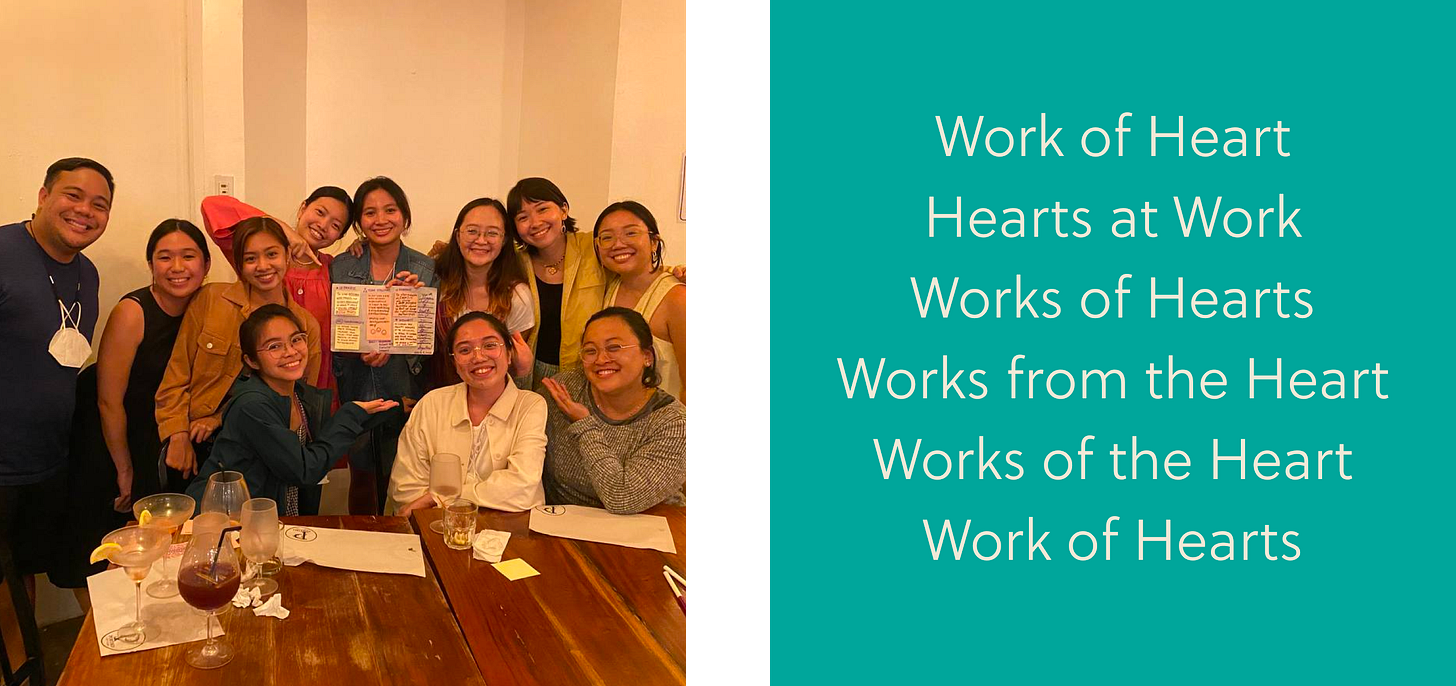
“Tamang hawak, tamang bitaw” is something a partner mentioned during a workshop. I can’t think of an English translation that’s just as poetic, but it essentially means knowing when to hold on and when to let go. There are no right or wrong answers, just decisions to make and contend with.
Seems daunting, but thankfully organizational rebrands are a team effort. Regular team-wide alignments gave us space to get on the same page, instill courage and confidence in one another, and collectively imagine what the new brand should be or look like. Slowly but surely, this new brand began to take shape—because we dared to let go of Works of Heart and create something new together.
#2: Tell a neat story
Now for a lesson that’s a little more technical. Before even thinking about logos and fonts and color palettes, we began the rebrand process by understanding and articulating who we are—and we saw this effort pay off immensely.
Dapat’s entire brand, from the name to the creative direction, is anchored in the reason we exist: To design the futures we deserve. It sounds so simple and straightforward now, but these six words were the product of months of reflection and conversation. We kicked off the rebrand process with a brand perception survey, sent out to friends, former clients, and fellow designers; we interviewed some of them in person; we hired brand and communications consultants for workshops and conducted our own within the team. We were swimming in thoughts and feelings and words, so many words—condensing everything into a short phrase seemed impossible when there was so much we wanted to say.
We asked ourselves why we design for social impact, and it all came down to wanting to contribute our skills toward a better tomorrow—something that hasn’t changed since the studio’s inception, but could be worded more powerfully. After several drafts, we finally landed on “designing the futures we deserve.” It was broad enough to capture the various impact areas we work with, but also specific enough to evoke clear images of what these futures might look like, which differ from person to person. This tagline answered so many of our questions—how should we present our services? What are our brand values?—and led us to rename our studio to Dapat.
Dapat translates to “must.” It’s a word in our everyday vocabulary that speaks not only of what is desirable, but what is deserved. We felt that dapat in Filipino captured the boldness and depth of our purpose that no English word could.
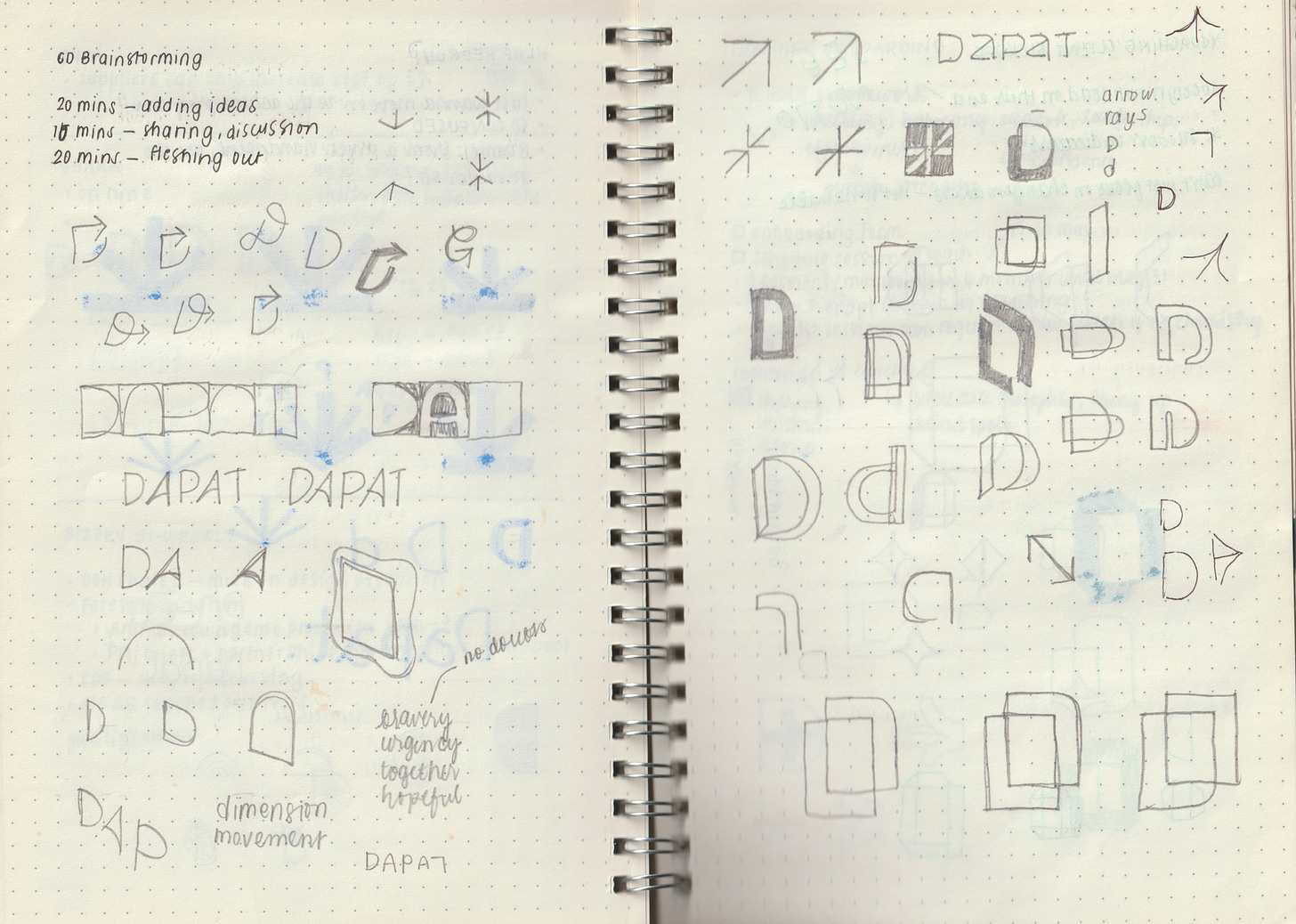
This is what I mean by telling a neat story for effective branding: You have to choose what to say and how to say it, with the consideration of who you’re saying it to. When we facilitate brand workshops with partners, we always express that each team member’s input is valid and correct (because what is a brand if not perception?), but in the end we must decide on what needs to be spotlighted: that which is most relevant and resonant with the target audience, and is also aligned with the brand’s truth.
Something they don’t usually say about branding is that so much of it relies on writing—the verbal just as impactful as the visual. As someone who’s been a bookworm for as long as she can remember and was a student journalist from high school to college, reading and writing has hugely shaped the way I think and, subsequently, the way I design. (See one of my favorite essays on this topic: Brian LaRossa’s “Why it Matters to Me if Designers Read and Write.”) It’s not a requirement, but an expansive vocabulary and strong storytelling skills do help in stringing together compelling, memorable narratives.
#3: It’s only the beginning
The thing that kept me going throughout the rebrand process, besides the excitement of sharing our work with the world, was that it would all come to an end on launch day—or so I thought. We unveiled Dapat on a Friday, took Monday off, and woke up on Tuesday to more branding-related tasks left unticked on our seemingly never-ending to-do list. Turns out completing your brand’s strategy and visual identity is only half of the work—the rest is embodying it in everything you do after you launch. Branding is in present progressive tense after all.
Works of Heart held us back, but Dapat gives us so much space to explore. I always thought brands were supposed to be monolithic like mountains, but I’m starting to think that well-designed brands are more like clay, endlessly malleable in the hands of those who build it, encouraging creativity and individuality rather than rigidity and uniformity.
Our philosophy is transformation through participative design. This applies not only to the projects we take on but to our studio’s own brand as well. At our launch exhibit Designing Futures, we created opportunities for visitors to interact with our work—we placed reaction stickers visitors could place on our exhibit materials and a wall where they could write down their answers to the question “Ano ang karapat-dapat para sa Pilipinas? At paano makakatulong ang design?” (What does the Philippines deserve? And how can design help?)
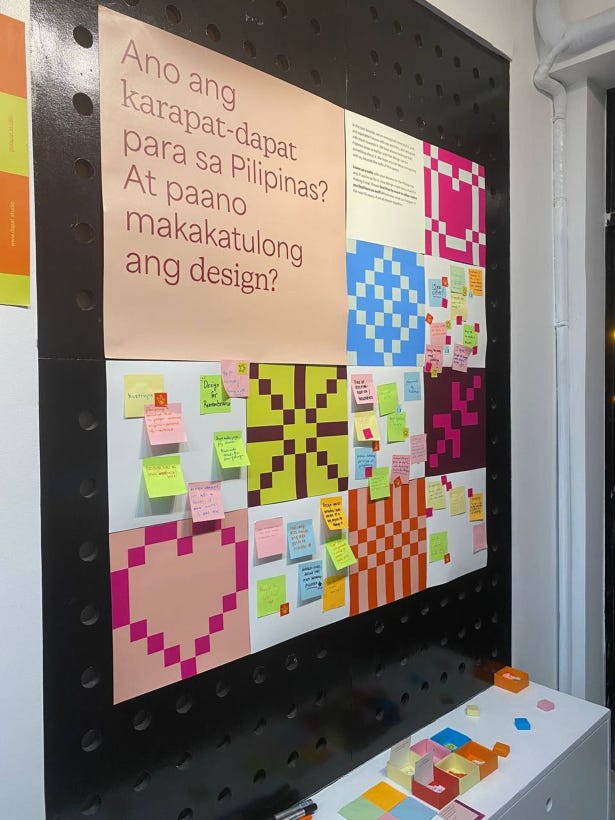
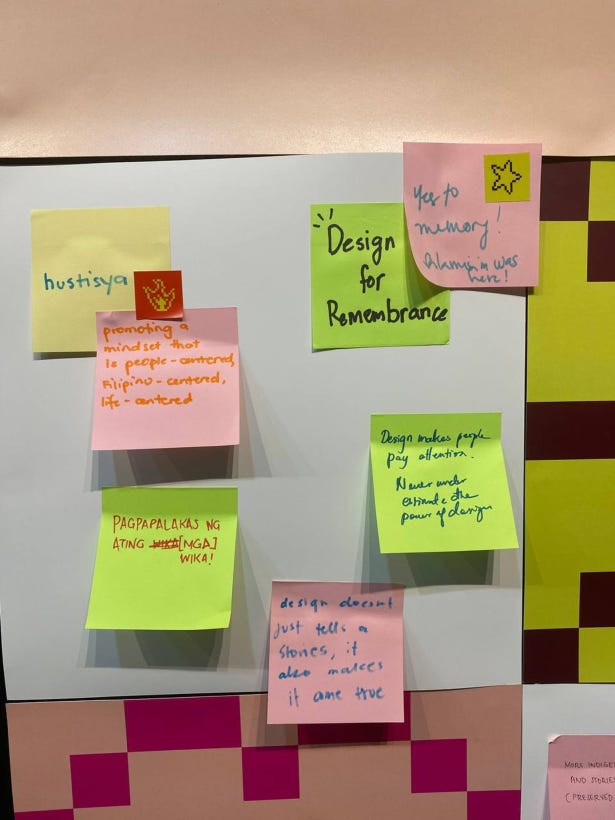
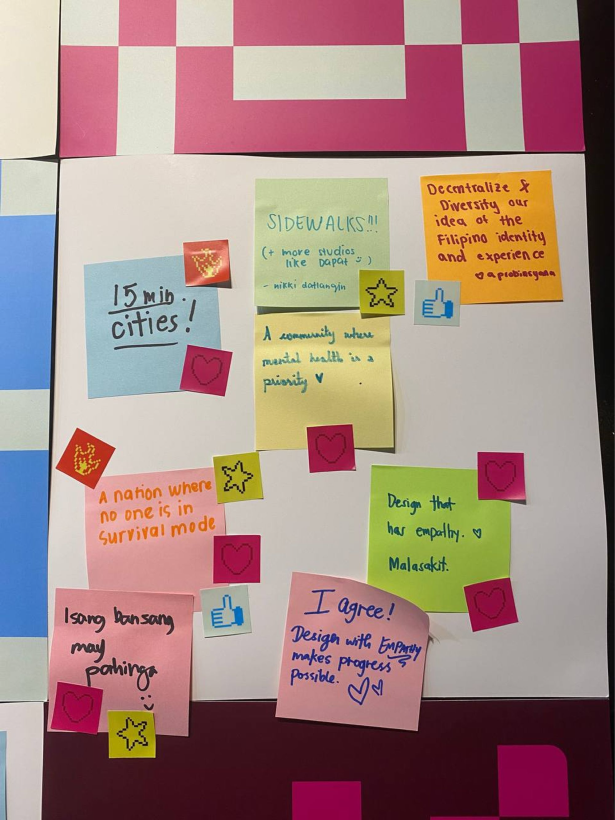
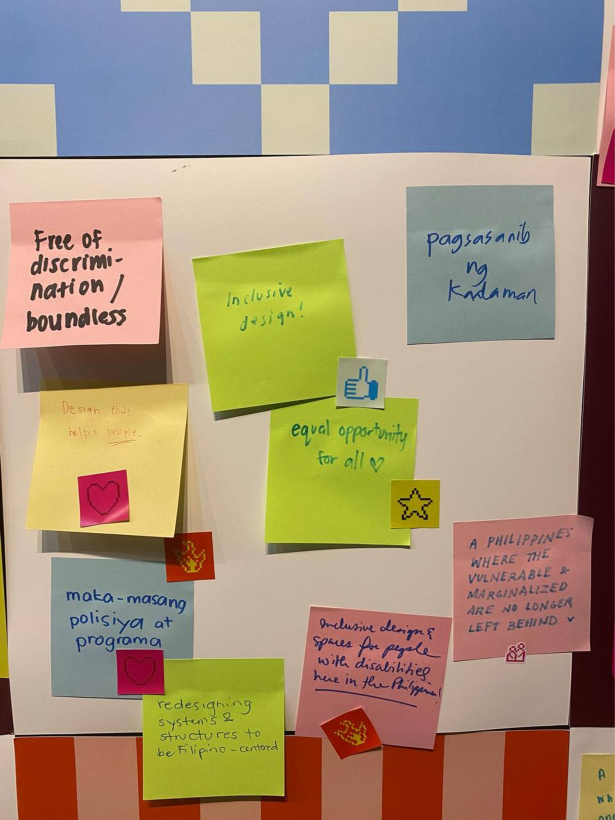
Rebranding to Dapat was truly A Journey, but it’s not quite over yet. I’m excited to see how Dapat evolves and expands in its first year. I hope you are too!
Wishing you a cozy and joyful holiday,
Nikki 🫶
P.S. If your organization is interested in revisiting your brand identity, we’d love to collaborate. Get in touch at hello@dapat.studio and we’ll get back to you when we resume work in January.





